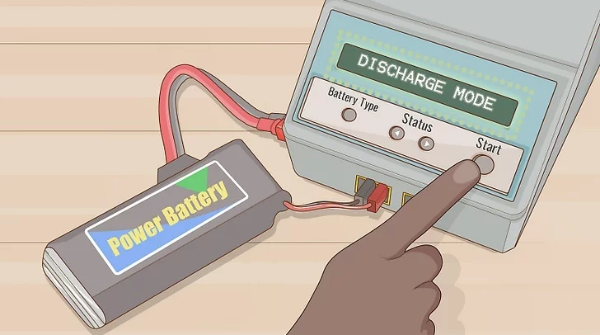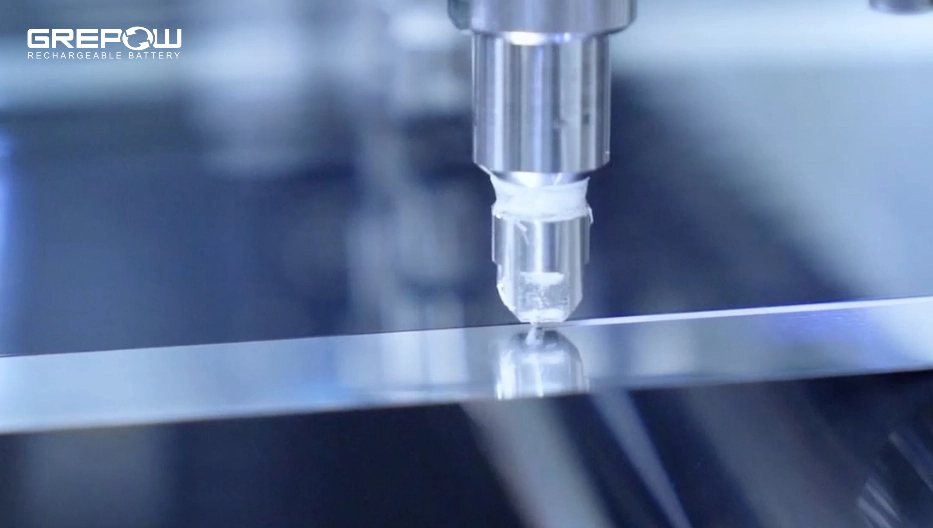How to Discharge a LiPo Battery?
Lithium Polymer (LiPo) batteries are widely used in various applications, from drones and RC cars to portable electronics and more. Proper handling and maintenance of these batteries are crucial to ensure safety and longevity. One important aspect of LiPo battery maintenance is discharging. This article covers when and why to discharge LiPo batteries, how to do it safely, and answers some common questions about the discharging process.
When to Discharge LiPo Batteries?
●Storage: If you plan to store your LiPo battery for an extended period (more than a week), it's best to discharge it to a storage voltage of 3.7-3.8V per cell (follow manufacturer recommendations).
●Balancing: Occasionally, you may need to balance the cells of a LiPo battery, which involves discharging the cells to the same voltage.
●Disposal: When a LiPo battery is at the end of its life and needs to be disposed of, it should be fully discharged to ensure safety.
●Maintenance: Regular discharging and charging cycles can help maintain battery health.
Why to Discharge LiPo Batteries?
●Safety: Discharging a LiPo battery to a safe voltage before storage or disposal minimizes the risk of swelling, leakage, or fire.
●Longevity: Proper discharge and storage practices can extend the life of your LiPo battery.
●Performance: Balanced cells ensure that the battery delivers consistent performance and avoids overcharging or deep discharging of individual cells.
How to Safely Discharge a LiPo Battery?
●Use a Battery Discharger: Specialized LiPo battery dischargers are designed to safely discharge batteries to a desired voltage.
●Use a LiPo Charger with Discharge Function: Many modern LiPo chargers have a discharge function that allows you to set the desired discharge voltage.
●Manual Discharge: Connect the battery to a safe load, such as a resistor or a low-wattage light bulb, and monitor the voltage with a multimeter. This method requires careful monitoring to avoid over-discharging.

How to Discharge a LiPo Battery?
Following guidelines and steps below will help ensure the safe and effective discharge of LiPo batteries:
LiPo Battery Discharge Guidelines
●Know the Specifications: Understand the battery's specifications, including capacity (mAh), voltage (S rating), and discharge rate (C rating).
●Proper Storage Voltage: Store LiPo batteries at approximately 3.7 to 3.85 volts per cell. Never store them fully charged or completely discharged (follow manufacturer recommendations).
●Avoid Over-Discharging: Never let the voltage of any cell drop below 3.0 volts. Over-discharging can permanently damage the battery (follow manufacturer recommendations).
●Temperature Management: Discharge LiPo batteries at safe temperatures, ideally between 20°C to 40°C (68°F to 104°F). Avoid discharging in extreme cold or hot conditions.
●Use a Battery Management System (BMS): For added safety, use a BMS to monitor and manage the battery's state during discharge.
●Balanced Discharging: Ensure that all cells in a pack are balanced to avoid cell damage and maintain performance.
●Respect the C Rating: Do not exceed the battery's discharge C rating, as this can lead to overheating and potential damage.
Steps to Properly Discharge a LiPo Battery
●1.Preparation
Ensure you are in a safe environment away from flammable materials.
Use appropriate discharge equipment, such as a LiPo charger/discharger with a discharge function.
●2.Connect the Battery
Connect the battery to the discharger, ensuring correct polarity.
Select the appropriate discharge program on your charger or discharger.
●3.Set Discharge Parameters
Set the discharge current (amperage) according to the battery's specifications. Typically, a 1C discharge rate is safe for most batteries.
Set the cutoff voltage to around 3.3 to 3.5 volts per cell to avoid over-discharging (follow manufacturer recommendations).
●4.Monitor the Process
Start the discharge process and monitor the battery and equipment.
Keep an eye on the temperature and voltage during discharge.
●5.Completion
Stop the discharge process when the battery reaches the set cutoff voltage.
If you are discharging for storage, ensure the battery voltage is around 3.7 to 3.85 volts per cell (follow manufacturer recommendations).
●6.Post-Discharge
Disconnect the battery from the discharger.
Store the battery in a safe, cool, and dry place, ideally in a LiPo safe bag or container.
Safety Tips
●Use LiPo Safe Bags: When discharging, store the battery in a LiPo safe bag or container to mitigate risks in case of a malfunction.
●Fire Extinguisher: Always have a fire extinguisher nearby when working with LiPo batteries.
●Regular Inspection: Regularly inspect batteries for any signs of damage, swelling, or leaks before and after discharge. If any issues are detected, do not use the battery.
What voltage to Discharge a LiPo Battery?
The discharge voltage levels for LiPo (Lithium Polymer) batteries are crucial for their safe operation, longevity, and proper disposal. Always follow manufacturer recommendations and safety guidelines when handling LiPo batteries to ensure safety and battery longevity. The absolute minimum voltage for discharging a LiPo cell is typically 3.0 volts per cell. Discharging below this voltage can cause permanent damage to the battery. During normal use, it is recommended to discharge a LiPo battery to no less than 3.3 to 3.5 volts per cell. This helps maintain battery health and prolongs its life. When preparing a LiPo battery for disposal, it is safe to discharge it to 0 volts. However, it's important to do this carefully to avoid any risk of fire or explosion. This can be done using a dedicated battery discharger or a resistor specifically designed for this purpose.
What Amp to Discharge a LiPo Battery?
The discharge rate (measured in amps) depends on the battery's capacity (mAh) and the manufacturer's recommendations. As a general rule, it's safe to discharge a LiPo battery at a rate of 1C or less. For example, a 2200mAh battery can be discharged at 2.2A. For storage discharge, a lower rate of 0.5C or even 0.1C is recommended.
How to avoid over-discharging a lipo battery?
To avoid over-discharging a LiPo (Lithium Polymer) battery, follow these guidelines:
●Use a Battery Voltage Alarm:
These devices plug into the battery's balance lead and sound an alarm when any cell's voltage drops below a safe level (typically around 3.3-3.5 volts per cell).
●Set Low Voltage Cutoff on Your ESC:
Most modern Electronic Speed Controllers (ESCs) have a low voltage cutoff feature that can be set to prevent the battery from discharging too much. Configure it to a safe level (around 3.3-3.5 volts per cell).
●Monitor Battery Voltage During Use:
Use a telemetry system that allows you to monitor the battery voltage in real time while flying. Many FPV (First Person View) systems include this feature.
●Time Your Flights:
Based on your flight experience and the battery capacity, estimate the safe flight duration. Set a timer to ensure you land before the battery voltage drops too low.
●Balance Charge Your Batteries:
Always balance charge your batteries to ensure all cells are charged evenly. This helps prevent any cell from dropping too low during discharge.
●Avoid Deep Discharges:
Try to land and stop using the battery before it drops below 3.7 volts per cell. Regularly discharging below this level can shorten the battery's lifespan.
●Store Batteries at Proper Voltage:
If you are not using the batteries for an extended period, store them at a storage voltage of around 3.8-3.85 volts per cell.
How to Fast Discharge a Battery?
To discharge a LiPo battery quickly, you can use a higher load, such as a high-wattage light bulb or a resistor with a lower resistance value. However, it's crucial to monitor the battery's temperature and voltage closely to prevent overheating or over-discharging, which can be dangerous.
How to Fully Discharge a LiPo Battery for Disposal?
To fully discharge a LiPo battery for disposal:
●Connect a Load: Attach a resistor or low-wattage light bulb to the battery to slowly discharge it.
●Monitor the Voltage: Use a multimeter to check the voltage periodically until it drops below 1V per cell.
●Submerge in Saltwater: After the voltage is sufficiently low, you can submerge the battery in a saltwater solution (1 cup of salt per gallon of water) for 24 hours. This neutralizes any remaining charge.
How to Discharge a LiPo to Zero? Is It OK to Fully Discharge a LiPo Battery?
It's generally not recommended to discharge a LiPo battery to zero voltage, as it can permanently damage the battery and make it unsafe for disposal. Instead, discharge it to a low but safe voltage (below 3V per cell).It is not okay to fully discharge a LiPo battery to zero volts during regular use. Fully discharging a LiPo can cause irreversible damage to the cells and make the battery unstable. Always aim to keep the voltage above 3V per cell to ensure the battery's longevity and safety.
Conclusion
In conclusion, understanding how and when to discharge your LiPo batteries is essential for maintaining their performance and safety. By following the guidelines provided, you can ensure your batteries remain in good condition and avoid potential hazards associated with improper handling. As a global leading lipo battery manufacturer, Grepow offers professional customizable lipo battery and lipo battery charger solutions to meet the needs of all knids of consumer and industrial applications. If you have any questions or needs, please feel free to contact us at info@grepow.com.
Related Articles:
How to Fully Charge High Voltage Lipos?
How to Charge LiFePO4 Battery?
New Release Dual Channel Smart Chargers: TA7200 and TA9000PRO
Grepow Rechargeable Li-lon Button Cells Solutions
Rechargeable Coin Cell Applications
Related Articles
-

How to Handle Battery Overheating Issues?
2025-08-12 -

An In-Depth Look at the LiPo Battery Testing Process
2025-08-07 -

How Is a LiPo Battery Manufactured?
2025-08-06
Related products
-

Grepow Tattu R-Line 5.0 Series FPV Battery Pack
-

Grepow Tattu Standard Series FPV Done Battery Pack
-

Grepow Tattu Funfly Series FPV Battery Pack
















































